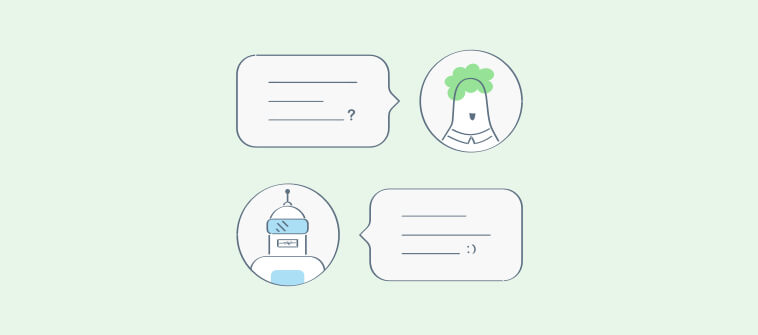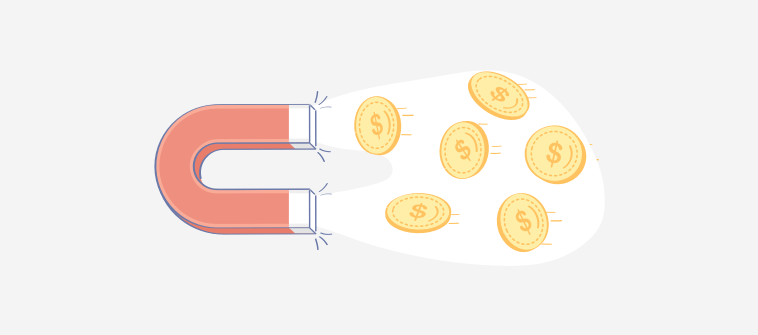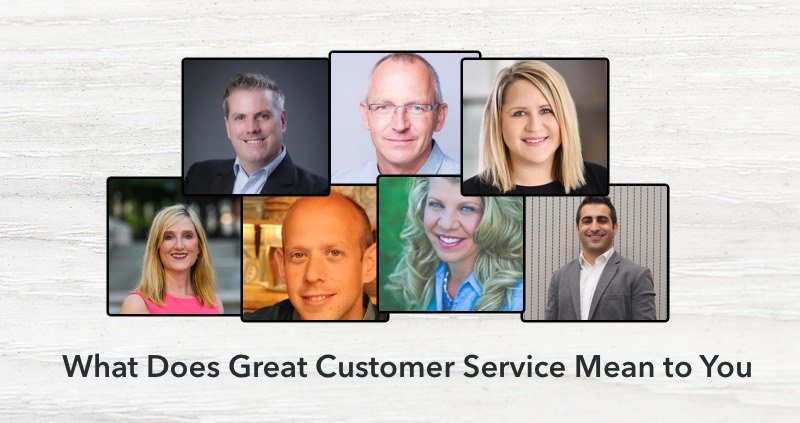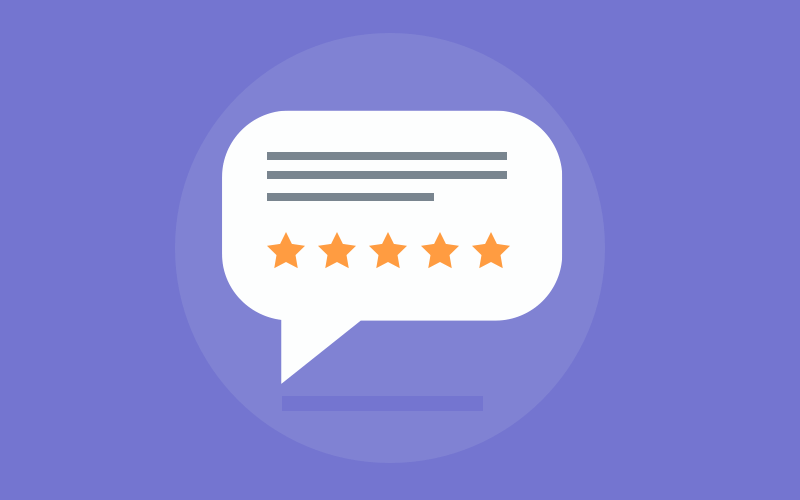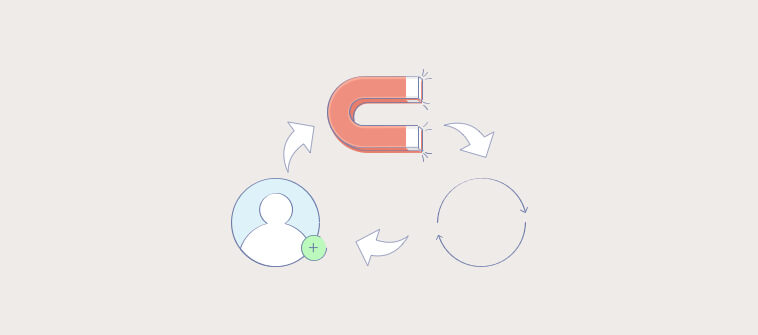
Imagine having new website visitors regularly who are really interested in your services.
They seem to love your website and convert a lot.
Also, they provide awesome feedback.
So, at first glance, you’re pretty happy with the performance of your business.
But in spite of that, you realize that somehow you haven’t managed to generate satisfying profits. And you have no idea why.
Before you start to think that there’s been some kind of mistake in the profits column of your periodical report, make sure to check your customer acquisition cost value.
And if you can’t check it because you’ve never really paid attention to it so far, read on, this blog is for you.
In this post, we’re showing how your CAC may impact the business results, why you should keep track of it, and how to do so to make sure your business is on the right path.
Let’s start!
What Are the Crucial Components of a Customer Acquisition Strategy
Acquiring new customers using different ads within the same campaign isn’t a unique practice for a successful business. What’s more, the majority of them choose to approach their audience in different ways and test their reactions. Then, the best performing ads, that is, the ones that generate the most attention and revenue, become the focus of the campaign.
However, this difference between poorly-performing and well-performing ads is sometimes difficult to tell. This is especially true if you don’t take into account some important parameters that impact their performance. These parameters are inclusive of:
Simply put:
If two ads attract the same number of people and generate the same revenue, you still can’t claim with confidence that they are equally well-performing. That’s probably because you know that one of them costs significantly more than the other one.
And this aspect of the customer acquisition strategy is what makes cost such a pivotal factor to analyze.
But what is customer acquisition cost in general?
What does it include? How to calculate CAC? How to keep it at an optimal level and stay on top of it?
Read on to learn more in this thorough guide to the cost of customer acquisition.
What is Customer Acquisition Cost (CAC)?
To begin with, you can’t really define customer acquisition costs without understanding why this process requires a diversity of financial investments. It doesn’t only include direct advertising costs but also the salaries of people impacting customer acquisition, including social media managers, marketers, salespeople, etc.
“Theoretically, customer acquisition cost
represents the cost of transforming
an interested person into a
customer.”
Tweet this
Practically speaking, it helps you calculate your profitability by contrasting the money you invest in gaining new customers and the number of customers that you actually gain.
Having in mind this relationship between money invested and customers gained, you should aim at reducing the CAC value as it makes your business function more efficiently and, therefore, provokes the growth of your profits.
How to Calculate Customer Acquisition Cost
Now, if you’re wondering how to calculate customer acquisition cost and learn the CAC formula, make sure to read the following lines thoroughly.
If you’ve ever googled customer acquisition cost formula, you’ve probably found out that it looks pretty simple:
All you have to do is divide the cost of sales and marketing by the number of newly acquired customers.

However, what frequently appears as a problem is defining what costs sales and marketing include in your specific case.
To help you figure this one out, we’ve prepared a list of the most common expenses that businesses usually have in this field. These are:
1. The advertisement’s financial investment
Practically, this is the money you spend on your ads, and it’s highly important to have it invested in a campaign that has the potential of generating leads and converting them into customers. To make sure that your campaign is successful, you can divide the revenue generated by your ad by the campaign cost.
2. The costs of implementing technological solutions
To make sure you can create and track ad campaigns in the best possible way, you have to rely on the use of appropriate technical and technological tools. These tools may vary from the simplest reporting and statistical tools to advanced marketing automation platforms like live chat support, automated chatbots, etc.
3. Human resources costs
No matter how much money you invest or how great tools you possess, if you don’t have well-trained, educated, and professional employees to manage the processes, you may end up with bad results. So, above all, make sure to have reliable staff and to motivate them by wisely investing in their work and training.
4. Content creation costs
Nowadays, all major companies invest a lot in the creation of meaningful, relevant, and engaging content that leads people from informing themselves about a certain product to buying it. No matter the form of this content, you’ll have to consider spending some money on its creation, having in mind your budget, of course.
And by content creation costs, we don’t only think about the direct costs of creative production such as writing, recording, designing, etc., but also the costs of acquiring talents that will represent your company as well as money invested into creative team building, conducting meetings, etc. All these activities impact your content production.
5. Costs of releasing marketing campaigns
If you want your ads to impact the audience and provide results, you should always design them following your general marketing strategy.
And marketing strategy is never only about paying for a certain ad but about launching a whole campaign system both online and offline, in different types of media, including television, newspapers, magazines, social media, etc. All these actions require certain money investments that you should consider when trying to calculate the customer acquisition cost.
→ Note: What Not to Include in Customer Acquisition Cost Formula
Even though customer success in SaaS is considered to have become one of the most powerful business weapons for conversion increase, the expert opinions on whether or not to include it in the CAC formula are pretty divided.
The main reason why we don’t recommend adding customer success to your CAC formula is the fact that this parameter simply doesn’t tell much about your new customer acquisition costs.
Yes, it shows you certain costs that you have to make in the process of acquiring new customers, but it’s actually more focused on the expansionary revenue, and not that much on your newly converted leads.
And if you want to include customer success in your CAC calculation, then we recommend using it for the calculation of the CAC ratio since that way, it can show you the acquisition team efficiency.
Understanding Customer Acquisition Cost On A Daily Basis
As you can see, the CAC formula, in the long run, requires a comprehensive approach to your finance, sales, and marketing. Therefore, you have to use some advanced tools and reports to make sure that you’ve got the right picture.
But what happens if you want to calculate CAC daily?
Do you still have to take care of these complex calculation processes and reports every single day?
The truth is that you don’t have to.
“On a daily basis, pay attention to your
day-to-day activities.”
Tweet this
Also, pay attention to those seemingly unimportant costs that help you acquire customers. Some of these daily costs that impact your CAC and that sometimes are neglected are, for instance:
- the costs of the agency that figured out the ideal ad placement for your business;
- the salaries of employees working on your ad strategy and campaign;
- the costs of your sales department, including their salaries, commissions, etc;
- the costs of payment processing fee once your website visitors convert;
- the costs of hiring people to create content related to the product you’re trying to sell: creative writers, copywriters, video makers, designers, influencers, etc.
Apparently, not only is this daily calculation convenient because you don’t need any advanced means to deal with the mentioned costs, but it’s also useful when you start to build those thorough periodical reports. Based on daily CAC calculations, you can easily get a complete and precise picture for a longer period of time.
FREE. All Features. FOREVER!
Try our Forever FREE account with all premium features!
Taking CAC Calculation To A New Level: LTV/CAC Ratio
It can be pretty frustrating to focus all your attention on your costs, right? But guess what, as long as they are paying off, you should consider them a good investment. And there’s no better way of putting your CAC costs in this perspective (and deciding if they are a good investment for real) than contrasting them with your customers’ lifetime value.
Customer lifetime value (LTV) is another useful parameter that helps you figure out the amount of revenue that any customer brings to you within a certain period. And this parameter is usually calculated and analyzed for a long run (usually a 1- to 5-year period).
Now, here’s how you can calculate LTV and why you shouldn’t miss analyzing this ratio once you’re long enough in the market.
How to Calculate LTV?
Having in mind that a customer’s lifetime value represents the predicted revenue that customers generate while their relationship with your business lasts, its formula is based on the calculation of several variables. These include:
1. Average Purchase Frequency
number of purchases / number of unique customers that made a purchase, both of the values referring to the same period
2. Average Purchase Value
total revenue / total number of purchases, both of the values referring to the same period
3. Customer Value
Average Purchase Value x Average Purchase Frequency
4. Average Customer Lifespan
the average number of years a customer keeps purchasing your products or services
Once you collect all these values, you can easily calculate LTV:
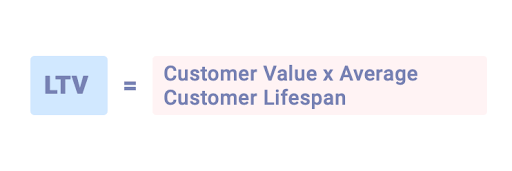
So, practically speaking, the value of LTV represents a realistic estimation of the revenue you can expect from an average, loyal customer during his or her loyalty period.
Why Is LTV to CAC Ratio so Important for Your Business?
As you may be able to conclude from the given LTV formula,
LTV/CAC ratio is an important parameter as it helps you understand a customer’s value in terms of the money you have to invest in attaining them.
So, this ratio can be helpful when establishing marketing, sales, and customer service spending habits and projections.
But what are the optimal values of this ratio?
The ideal LTV to CAC ratio that numerous businesses try to achieve is 3:1; that is, the customers’ lifetime value should be three times the value of customer acquisition cost.
So, as long as your right-side number is greater than the left-side number, you’re doing a nice job. However, make sure not to have your LTV too high than CAC as it may imply that you’re missing out on additional customers due to low investment in your marketing or sales.
Also, once your CAC becomes higher than your LTV in this ratio, it’s a clear alarm that you are spending too much on customer acquisition without positive results. In other words, you’re spending more on attracting customers than they spend on your products or services.
Related Read: Tips to Increase Customer Lifetime Value (CLV)
How Much Does It Cost to Acquire A Customer?
Now, if you’re looking for a generally accepted average cost, we’ll have to disappoint you.
The cost of customer acquisition dramatically varies from one industry to another, and it depends on the diversity of specific factors.
Among these factors, the most impactful ones normally are the reputation of a company, its market position, customers’ lifespan, purchase value, and frequency, as well as sales cycle length.
So, to be able to talk about exact numbers and values, we should have in mind the company’s industry.
One of the most interesting examples of these dramatic oscillations of CAC among industries comes from Lon Safko (Entrepreneur.com). He researched CAC data for travel, telecom, retail, and financial industry in 2013. And the data collected showed that the representative CAC for the telecom sector was $315 at Sprint PCS while Priceline.com (travel industry) had the CAC of only $7. Financial and retail sectors were somewhere in between, still with a dramatic difference between them, with CAC of $175 at TD Waterhouse (financial sector) and $10 at Barnesandnoble.com (retail).
FREE. All Features. FOREVER!
Try our Forever FREE account with all premium features!
How to Reduce Customer Acquisition Cost
So, to make sure that you’re getting the most out of the money you invest in customer acquisition, you may want to check out and apply some of the tips below.
#1 Use live chat software to provide support and to engage with potential customers proactively.

On the one hand, you will increase your cost efficiency as the use of live chat software requires just a single-time purchase and a well-trained agent. On the other hand, you’ll also make it easier for your brand representatives to get connected with visitors and break the communication barrier that otherwise may exist between you.
#2 Pay attention to your customers’ reactions.
Changing website style, designing complementary products, introducing product fixes, offering new features… Whatever you do with your business, make sure to feel your customers’ pulse. If they poorly react to the changes you introduce, you may want to reconsider your decision. No matter what the change is about, if it may impact your customers, do your best to get to know their opinions and act in accordance with them.
#3 Create a simple and intuitive conversion path.
If your potential customers have to deal with complicated processes that require a lot of time and patience, you may end up losing them. So, make sure to provide them a sleek experience that will make them convert without putting too much effort into the process.
You can start with improving the mobile version of your website, providing easily understandable instructions, and be there for them in case they need your real-time assistance.
#4 Try to establish an attractive referral network.
While this is only possible if you create an attractive referral program for your customers that are willing to spread the word, this effort usually pays off. Practically speaking, customers attracted through referral programs don’t increase your CAC cost as you don’t have a direct acquisition cost–your loyal customers do the work for you.
#5 Use your money wisely.
Instead of blindly testing a diversity of sales and marketing channels at a time, primarily focus on the ones that have shown good results. And if you want to test new channels, do it wisely: one channel at a time. Otherwise, you may be surprised by sky-rocketing acquisition costs that may jeopardize your business performance.
#6 Add social proof to your website.
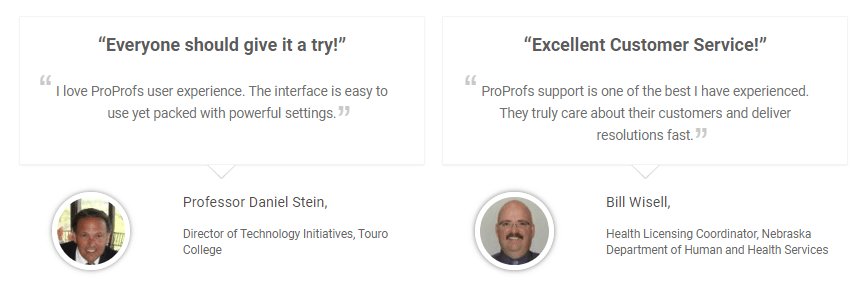
If your potential customer can see other people’s opinions and comments on your products and service, and get insight into their overall experience, they will be more likely to put their trust in you. And the more they convert, the more the efficiency of your customer acquisition cost increases.
#7 Reduce CAC providing relevant and engaging content.
No matter what you are trying to sell, one of the keys to your success lies in the story you’re telling about the product. So, if you want to make sure that you’re acting wisely when it comes to your CAC, then invest in your content.
Depending on your budget and business nature, you can produce different types of relevant content. Use infographic pictures, videos, slide shows, podcasts, or anything else that you consider helpful when telling a lead-generating, visitor-converting story.
#8 Get to know your audience.
This one seems too generic, huh? Well, actually, under getting to know your audience, we’re referring to getting to know more about different groups of customers by analyzing them. For a large number of businesses, it’s inefficient to address all customers the same way.
So, apart from offering a single approach that may or may not work for all of the people you’re trying to reach, try to understand the needs and mindset of your different major target groups.
For example, if you’re trying to sell a laptop, you probably won’t reach out to a twenty-year-old girl and a fifty-year-old man in the same way. So think about that when building your customer acquisition strategy.
Wrapping Up: CAC Analysis Makes Your Customer Acquisition Strategy Pay Off
Customer acquisition cost represents an essential aspect of your strategy as it practically represents the cost of getting new customers. And you need this cost as low as possible if you want to succeed in what you do.
So, to create a healthy customer acquisition strategy that will bring you positive results in the long run, you have to put some effort into CAC analysis. And to be able to analyze it, you have to know how to calculate CAC reliably.
In other words, you should double-check if you’ve included all of the relevant expenses. This is usually provided by tracking CAC daily, starting from the simplest and lowest expenses that businesses sometimes tend to neglect.
Once you collect the daily data for a longer period, it will be much easier for you to calculate a periodical CAC. Plus, you’ll be sure that you’ve got reliable, plausible results.
You can also bring your analysis to a higher level by calculating LTV to CAC ratio. This parameter will show you the relation between the value you invest in acquiring customers and the value they give back by buying your products and services.
“As long as your LTV is higher than your CAC,
you’re on the right path,
but you still have to be careful to maintain this
ratio close to 3:1 if you want to achieve
the optimal results.”
Tweet this
Finally, if you’re worried about your CAC and are not happy with its performance, you may consider working on different factors that impact this cost. So, you may need to pay more attention to improving your support system and website design, but also analyze your target audience and its major groups.
Once you get to know them, do your best to create attractive acquisition strategies for each of them, offer engaging content, and try to simplify the conversion process. Focusing on these aspects will definitely help you bring your CAC to a more efficient, profits-increasing level.
Now that we’ve covered the basics of CAC and how to reduce it, it is time to take a look at some of the frequently asked questions below.
What is a customer acquisition specialist?
A customer acquisition specialist is qualified to assist businesses and brands to grow their customer base without spending much on paid traffic channels such as Google, Facebook, and others.
What is a customer acquisition model?
A customer acquisition model is seen as predictive models that help a brand acquire new customers or consumers. Some of the common customer acquisition models today are inclusive of loyalty model, cross-selling model, up-selling model, and co-branding model.
FREE. All Features. FOREVER!
Try our Forever FREE account with all premium features!
What are customer acquisition strategies?
A customer acquisition strategy is best defined as a mix of media and engagement tools. Basically, a concoction of lead generation and product offers that help a brand or business gain new customers. A brand has to target and reach such customers through online and offline journeys.
What should you not include in CAC?
Things that you shouldn’t include while calculating CAC are personnel costs for a sales team, user events, customer marketing campaigns, and customer giveaways such as holiday gifts, customer training, and so on.
FREE. All Features. FOREVER!
Try our Forever FREE account with all premium features!

 We'd love your feedback!
We'd love your feedback!
 Thanks for your feedback!
Thanks for your feedback!


